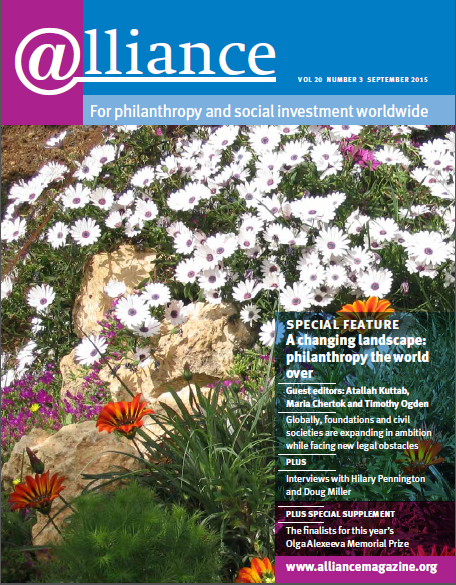I read Buzz Schimdt’s article, ‘Time for a new foundation for philanthropy’ (June issue) about foundation accountability with great interest. As someone who leads a nearly century-old family foundation, I have wrestled with many of the issues inherent in the strange marketplace of philanthropy. Certainly from this perch, I have seen the benefits of the long view that a perpetually endowed foundation can bring to problem-solving, and so I don’t agree with Schmidt’s sense that perpetuity is necessarily a negative thing. Nevertheless, I found compelling his insight that the investment mechanisms and the financial incentives that affect many aspects of the philanthropic sector incentivize long-lived institutions, and not always for the better.
Many of us are concerned with the problem of how to make philanthropy more effective. But I think it’s even more important to make more philanthropy. So I tend to focus on, and want to protect, mechanisms that incentivize as many people as possible – particularly wealthy people – to engage in philanthropic activities. I fear that some of the elements of Schmidt’s proposals, particularly the notion of assigning hierarchical ‘value’ or ‘quality’ measures on philanthropic activity, aren’t practical, operationally or politically, and that these kinds of mechanisms, rather than enhancing the philanthropic instincts of people, will cause them to turn away from philanthropy.
I think we all agree that the sorts of opaque donor-advised funds that sit idle year after year are exactly the sorts of ‘tax dodge’ mechanisms that we want to eradicate from the philanthropic landscape, or at least govern through minimum payout requirements. However, we are seeing some remarkable new philanthropic instruments appearing on the scene, hybrid models such as the Omidyar Network and the crowd-funding giving at Kickstarter, that indicate the philanthropic marketplace is in bloom and set for massive – and positive – change. These and so many other innovations build on the combined entrepreneurial and philanthropic spirit that many new donors are bringing to the work.
One of the inherently beautiful things about philanthropy is that it can take many forms and provide funding to a wide variety of social goods – from education, to the arts, to social justice, to providing food and shelter to the poor. And I’m sure that Schmidt and I both want more wealth flowing towards those charitable activities than to building villas and purchasing yachts. While the sector certainly needs reform, I would proceed cautiously, building on the great new work being done, and not inadvertently turning off future philanthropists with complicated new oversight mechanisms.
Phillip Henderson
President, Surdna Foundation, New York
Next letter to read:
Accountability boils down to beneficiaries
Take advice from community funds
Philanthropy’s value? Independence



Comments (0)